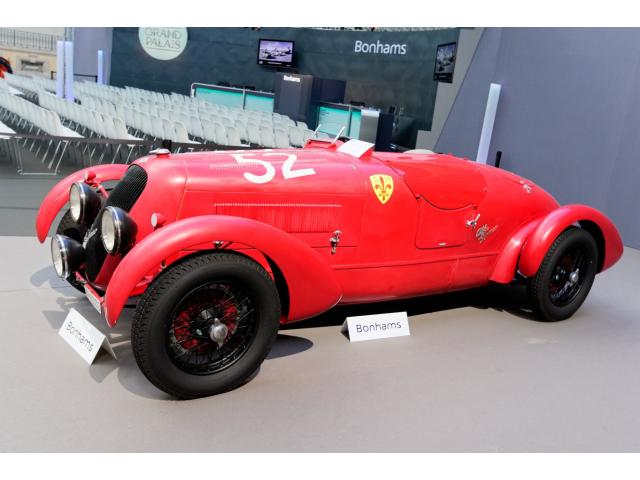1934 Alfa Romeo 6C 2300 Pescara
- Brand: Alfa Romeo
1934 Alfa Romeo 6C 2300 Pescara Spider by Zagato
In the latter-part of the 1920s and well into the 1930s, Alfa Romeo would come to dominate motor racing. The man that would author the ascension to indomitability would be Vittorio Jano. For more than a decade, Jano would fashion sports cars that continue to live on to this very day in automotive legend.
The next in that line of dominance would be the 6C 2300. First introduced in 1934 at the Milan Salone, the 2300 would be a step-up in development from its family ancestors. Aluminum-alloy cylinder heads and a cast crankshaft would be the foundation of the car that would be given to Scuderia Ferrari to carry on Alfa's reign.
In the model's first-ever race three out of four would finish with one finishing second and the others coming home in fourth and fifth. However, in August of '34, at the 24 Ore di Pescara, three would finish the race 1st, 2nd and 3rd. This was an impressive performance, especially given Tazio Nuvolari and Guy Moll were among the competition driving 8C 2300s.
Jacques de Rham was one of those young sons of noblemen that wasn't content with sitting in the back. Passionate about motorcycles and automobiles, the Swiss nobleman's son would use his affluence to start his own racing team known as 'Scuderia Maremmana'.
De Rham would have an impressive stable of automobiles that he wasn't afraid to lend to other drivers to use. A couple of those that would have some success using De Rham's automobiles would be Clemente Biondetti and Toulo de Graffenried.
Jacques would purchase a couple of the 6C 2300s. At the time, the cars were completed with bodies designed by Touring. Competing in hill climbs and other events, de Rham would quickly come to realize the Touring bodies were just a little too heavy to enable the car to be as competitive as possible. As a result, Jacques would turn to Zagato of Milan.
Zagato had a body style ideally-suited for the Alfa. Known as the Siluro, this design featured a rather bulbous look, but it was considered very aerodynamic in its day. What's more, because the body was made from aluminum, the car would end up weighing more than 600 pounds lighter than before making it much more competitive.
The updates from Zagato would be helpful as one of de Rham's 6C 2300s would end up scoring a class victory in the Grand Prix de Provence et de Marseille.
Sadly, neither of the two examples of the 6C 2300 ordered by de Rham are known to exist. However, a passionate Alfa Romeo collector has ensured de Rham's legacy doesn't just live on in the pages of some book.
Taking more than four years to complete, a 1934 Alfa Romeo 6C 2300 GT with a Zagato Siluro body would be constructed by hand, with nearly every single detail built from scratch from scale drawings and historic photographs.
Interestingly, the project would begin with a 6C 2300 GT Pescara Berlina 7th Series coachwork fashioned by Touring. Dino Cognolato would then take on the task of dismantling the body and fashioning a Siluro body in the style of Zagato.
The chassis would also have a matching number engine that would produce more than 100hp after some overhauling and testing. The end result would be so well received the car would end up being invited by Zagato to a special gathering. At that gathering, 700321 would be presented with an official certification of authenticity by Zagato officials. The whole scene would be made complete by the fact the certification ceremony would be conducted at Alfa Romeo's old test track Arese.
Descriptions & pictures by conceptcarz & bonhams & wikimedia
| Specification | |
| Production Start | 1934 |
| Country of origin | Italy |


































